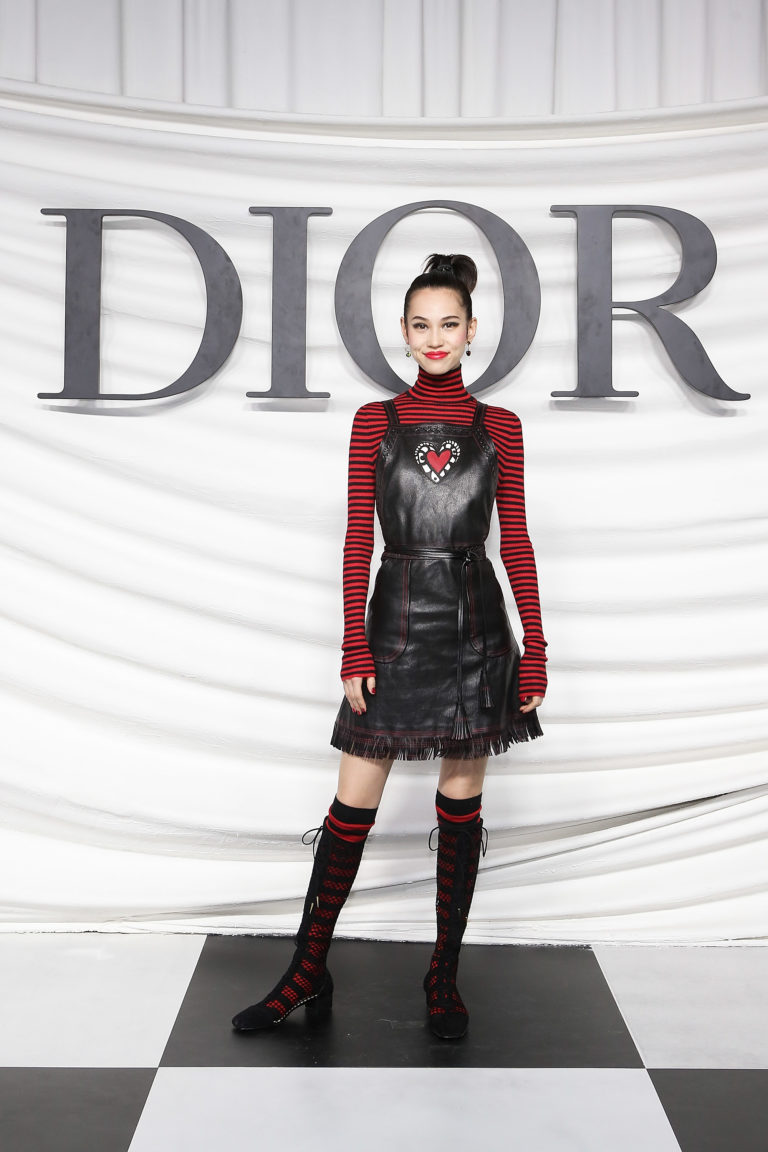The House celebrates its special connection to China with the spring-summer 2018 haute couture show in Shanghai. Inspired by the Surrealist movement and presented in January at the Musée Rodin in Paris, this collection, designed by Maria Grazia Chiuri, Artistic Director of the Dior women’s collections, sees the addition of twelve new designs for the occasion. As an object of re nement, the fan in uenced the creation of these exclusives looks.
Symbolizing cultural and artistic exchange between Europe and China, the fan also proved an inspiration for Christian Dior. In 1949, for the Miss Dior campaign, realized by the fashion illustrator René Gruau, the couturier transformed it into a seductive objet d’art. For his spring-summer 1950 collection, he reinterpreted this accessory to create an ivory silk taffeta evening dress, Francis Poulenc. This iconic piece has been revisited by Maria Grazia Chiuri, along with such other emblematic designs as Vénus and Junon. “These dresses bear extraordinary witness to a certain taste, and a Dior identity, that are timeless. Their construction consists of interplays of layering, pleating and curves that recall the shape of a fan. Rede ned for a contemporary audience, these dresses show that the language of fashion is still extremely pertinent, powerful and understandable in different places around the world,” observes Maria Grazia Chiuri.
The fan is also a recurring element in Surrealist art. Related to the mask, it alludes to this artistic movement’s favorite themes: optical illusions and trompe l’œil. It also possesses its own language. Dreamlike phrases and messages, written in a poetic rhythm, are embroidered in delicate threads on a number of these unique creations. “Vous qui ne voyez pas, pensez à ceux qui voient. Eventail de vos hasards” [You who do not see, think of those who see. Spread your chances], “L’immense secret. Si vous aimez l’amour, vous aimerez le Surréalisme” [The immense secret. If you love love, you will love Surrealism], or “Rêve d’être libre. Soleil renversé, Lune noire à marée basse” [Dream of being free. The Sun reversed, a black Moon at low tide], these citations, termed “butter ies” by the movement’s artists, can be glimpsed and read as the models move.
In an additional homage to China, several of these looks have been produced in red, such as ball gowns and a tuxedo decorated with a pleated cape. “Monsieur Dior loved the colour red. For him, red represented energy, a positive force, the very color of life. Red is also associated with lacquerware, an exceptional art form typical of East Asian traditions. The glossy surface immediately evokes the timeless appeal of imperial China. The use of red allowed me to enhance the Dior heritage, and link it with a faraway and fascinating culture,” the Artistic Director of the women’s collections explains.

SHANGHAI, CHINA – MARCH 29: Angelababy attends Christian Dior Haute-Couture Spring/Summer 2018 show at MinshengArt Wharf on March 29, 2018 in Shanghai, China. (Photo by Emmanuel Wong/Getty Images for Christian Dior Couture) *** Local Caption *** Angelababy

<> Christian Dior Haute-Couture Spring/Summer 2018 show at MinshengArt Wharf on March 29, 2018 in Shanghai, China.

<> Christian Dior Haute-Couture Spring/Summer 2018 show at MinshengArt Wharf on March 29, 2018 in Shanghai, China.







No Comment